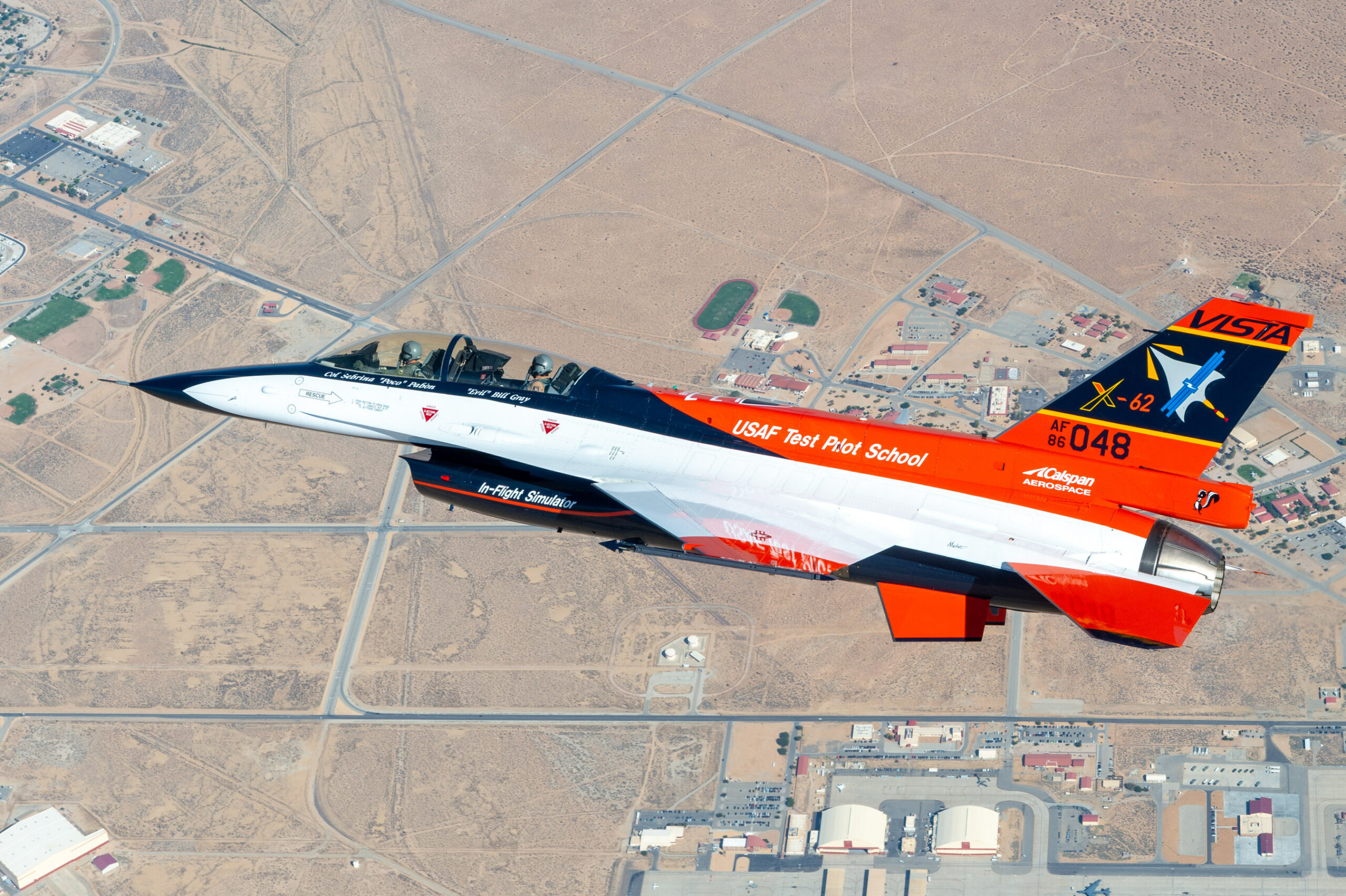
In a revolutionary moment for aviation, the US Air Force and its partners recently launched an ambitious mission that saw a test version of the F-16 fighter jet, VISTA X-62A, stay in the sky for over 17 hours. The jet was piloted by an artificial intelligence (AI) entity, making it the first time the technology was involved in a tactical aircraft. The Skunk Works section of Lockheed Martin and the Calspan Corporation also took part in the flight.
The Variation In-flight Simulation Test Aircraft, also known as VISTA, is a modernized version of the NF-16D. The latter is an F-16d Block 30 Peace Marble II with Block 40 avionics.
The fighter jet has served at Edwards Air Force Base for about two decades. It is an F-16 with open architecture and tests new systems, with the ability to receive new modular software majestically.
In June 2021, the Air Force renamed the NF-16D the VISTA X-62A. The supersonic jet then received an updated VISTA Simulation System (VSS) provided by Calspan, Lockheed Martin’s Model Following Algorithm (MFA), and System for Autonomous Control of the Simulation (SACS).
US Fighter jet renamed VISTA X-62A in 2021
The Air Force significantly transformed its NF-16D fighter jet in June 2021 by naming it VISTA X-62A. This supersonic aircraft recently received an upgrade with Calspan’s enhanced VISTA Simulation System (VSS). The upgrade also had Lockheed Martin’s state-of-the-art Model Following Algorithm (MFA) and System for Autonomous Simulation Control (SACS).
The US Air Force began a series of tests in December, and the 17-hour flight was among the tests.
“This new mission system capability with VSS, MFA, and SACS enhances advancing autonomous aircraft algorithm development and integration. At the heart of the SACS system is the Skunk Works Enterprise-wide Open Systems Architecture (E-OSA), which powers the Enterprise Mission Computer version 2 (EMC2) or ‘Einstein Box’.”
Lockheed Martin
The US Air Force is working to rapidly advance Artificial Intelligence and autonomous flight capabilities, with the VISTA program playing a vital role in this effort. To achieve their goal of having aircraft resume testing by 2023, they are pushing forward at full throttle into AI-grade automation.
The featured image was taken from Lockheed Martin



